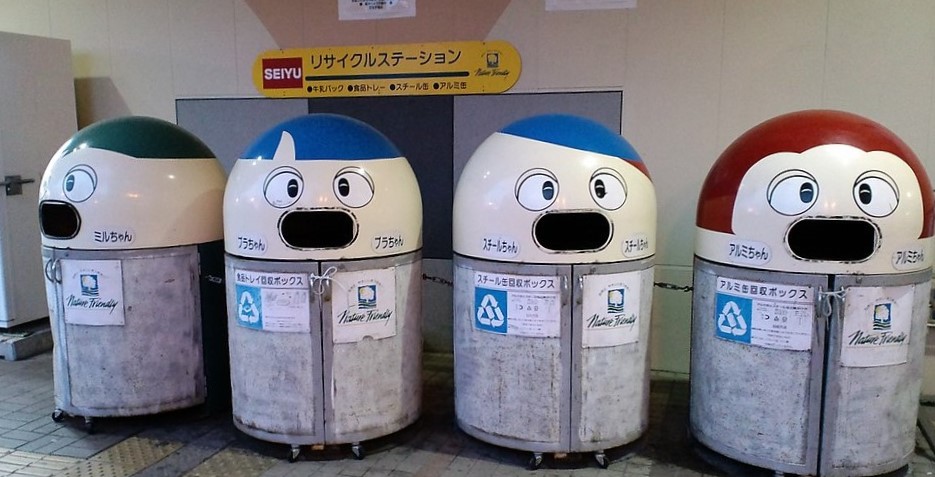Introduction – The Call for Global Plastic Treaty

Yesterday in Nairobi the Fifth session of the UN Environment Assembly (UNEA) accepted a proposal from Rwanda and Peru for a historic treaty aiming to turn the tide on plastic pollution. However, this was not the only proposal on the table. With powerful industrial interests lobbying behind the scenes for a less disruptive option, UNEA could easily have favoured alternative proposals from Japan or India with radically different potential outcomes for plastic pollution. Irene Maithya of Moi University asks what these alternative proposals might have offered and what differentiates a plastics treaty able to deliver the necessary level of change from one which cannot.
To begin with there were 3 proposed resolutions on the table:
- Rwanda-Peru Resolution
The resolution tabled by Rwanda and Peru on 20 October, and co-sponsored by 53 jurisdictions including Norway, Chile, Pakistan and the EU, is considered the most ambitious and recommends a full life cycle approach to plastics, tackling plastic production as well as harmful additives and waste management.
- Japan Resolution
A second resolution from Japan, submitted on 6 December 2021 and supported by Antigua and Barbuda, Cambodia, Palau and Sri Lanka, is more limited in scope as it focuses on marine plastic pollution
- India Resolution
India entered discussions at the last minute with an alternative resolution on single-use plastics, published on 31 January. Unlike the other proposals, India’s document focuses on a voluntary framework, rather than a mandate for the creation of a legally binding global agreement.
Several UN member states asked that the two original proposals be merged before the main meeting. Additionally, more than 70 consumer brands, including Coca-Cola, PepsiCo, Unilever and Ikea, issued a joint statement in January this year setting out plans for reducing plastic production and use.

- State of affairs
Undoubtedly, single use plastic products have become both a menace and a transnational challenge. Tons and tons of plastic waste continue to be disposed daily, with no regard to the environment at large, posing a danger to animals, including us humans. Efforts by individual governments have seen millions of shillings being pumped into managing plastic waste, with some resolving to permanently ban the use of plastics.
Plastic contamination in the ocean has reached crisis proportions. Every year, an estimated eight million tons of plastic garbage enters the world’s oceans, endangering marine life, coastal livelihoods, and possibly even human health. It is time to initiate negotiations on a new worldwide legally binding accord, as it is a global problem that urgently requires a global response.
2. Reflections on the Japan Resolution
In a working paper Japan called for an International Negotiating Committee (INC) to be established by UNEA with the mission of drafting an international legal instrument to combat marine plastic pollution while “taking into account respective national circumstances,” starting work in 2022 and aiming to finish by the sixth session of the UN Environment Assembly.
3.1 Summary of provisions
The proposal exclusively addressed marine plastic pollution. Like the Rwanda-Peru proposal it included the whole life cycle of plastics, except with an emphasis on downstream interventions, while promoting resource efficiency and circular economy. It included provisions to;
- set a common objective to reduce marine plastic pollution;
- develop and report national action plans to contribute to the common objective, taking into account the respective national circumstances;
- periodically review global progress on reducing marine plastic pollution towards the common objective;
- increase knowledge through awareness-raising and scientific information exchange;
- promote cooperation and coordination with relevant regional and international conventions, instruments and organizations, while recognizing their respective mandates and avoiding duplication;
- encourage action by all stakeholders including the private sector and promote cooperation at the global, regional, national and local levels;
- specify financial and technical arrangements including capacity building to support implementation;
- promote research and development into innovative solution and address implementation and compliance issues;

3.2 Strengths
No country expressed interest to co-sponsor the draft proposal, as many were inclined to solving the plastic crisis at large rather than adopting a sector specific approach, as the damages need to be tamed at the source, the immediate human ecosystem.
However, with enough backing, it could have been a viable proposal as the effects of plastic pollution are greatly felt at the marine ecosystem which covers 71% of the earth’s surface and supplies 97% of the earth’s water. Also, dealing with small deliverables (milestones) has been proven to be more achievable while realizing goals one step at a time.
- Call of Duty
Additionally, Japan called for participation in the INC to be open to all United Nations member states, regional economic integration organizations and other relevant stakeholders. It also requested support be accorded to developing countries as well as countries with economies in transition as this will allow for effective participation in the work of the INC.
- Proposal on National Action Plans
Regionally, Japan also proposes that countries develop, implement, update and report their national action plans, as tackling marine pollution requires massive effort and concrete plans. Action by all stakeholders including the private sector and cooperation at the global, regional, national and local levels is required.
- Promote Research
This is a novel proposal as a lot of research needs to be done at the scientific and governance level before implementation of a reform can be done.
3.3 Weaknesses
Limited in Scope
The resolution is focused on plastic waste management (rather than production), and proposes a closed mandate, which would mean negotiators could only address this aspect of plastic pollution when working towards an agreement.
Another key difference is that Japan’s text does not address harmful additives used in plastics, a growing human health concern. Peru’s ambassador to the UN agencies, Luis Juan Chuquihuara Chil, said during a high-level dialogue on 1 February that “frankly speaking … our resolution is more ambitious, as it deals with the whole life cycle”.
Little support
A few countries supported this proposal and they include; Antigua and Barbuda, Cambodia, Palau and Sri Lanka, though none excessed an interest to co-sponsor the resolution.
3.4 Conclusion – It is evident that time has come for a Global Treaty on Plastics
In the event neither Japan’s focus on marine pollution at the expense of other aspects of the problem nor India’s emphasis on voluntary, rather than legally mandated, action from member states, was judged sufficient to the cause. Clearly the scale, pervasiveness and urgency of the plastic crisis demands not small steps but giant leaps, and leaps driven by a bold and unifying vision.
Nonetheless elements of both Japan and India’s proposals survive in the final treaty. Measures from the Japan resolution were merged into the wider Rwanda-Peru proposal by the working group moderators, Canada and Ghana, in order to streamline the process and while the India proposal remained a separate document, provisions for the option of voluntary action were included in the wording of the final document on the insistence of the Indian representative.
The end result of this process of negotiation and compromise is that as the long work of turning an ambitious resolution into a functioning treaty begins, Japan and India have joined the 173 other signatories in putting the weight of nations behind the document which will become the first global, legally binding treaty on plastic pollution.


Nice commentary Irene! Very informative.
This is a insightful piece of article. I agree with the fact that the urgency of the plastic crisis demands not small steps but giant leaps driven by a bold and unifying vision.
Finally! At least the rubber for a concrete solution on managing the SUPPs menace has hit the road, and gaining momentum…
All efforts will be futile if little or no effort is put in alternatives. In Uganda, packaging is based on plastic. Alternatives have not yet been introduced on the market. How I wish we could find a material that can totally replace plastic in accessibility, affordability, convenience etc, then put a total ban on plastic production. Stringent laws without an alternative might not serve the purpose. Alternatively, a reward system for plastic disposal might also work…esp in Africa….like the carbon credit method, we could have plastic collection and disposal rewards.
There is indeed an international progressive move towards plastic pollution governance. I do agree that public-private partnerships is a key mode of promoting cooperation and support.
This is very positive progress.. awesome, good job.. keep at it..we are getting somewhere and a global treaty will help curb this plastic menace once and for all..
It is promising that there was momentum for a number of proposals, and that the most ambitious resolution gained the most support. That bodes well for future progress towards a global plastics treaty.